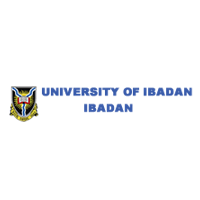Below is a summary of the abstract you submitted. Presenting author(s) is shown in bold.
If any changes need to be made, you can modify the abstract or change the authors.
You can also download a .docx version of this abstract.
If there are any problems, please email Dan at dar78@pitt.edu and he'll take care of them!
This abstract was last modified on March 14, 2022 at 7:28 a.m..

Microbacterium bacteriophage Gretchen (accession number: OK040779) was isolated by the University of Pittsburgh in the year 2019 (https://phagesdb.org/phages/Phishy/). The bacteriophage was grown on Microbacterium paraoxydans NWU1 bacterial host, sequenced via Illumina genome sequencing and revealed an approximate shotgun coverage of 2183X. It has a genome length of 47463 base pairs, a G+C content of 69.6%, and a 3’ sticky overhang of 11 bases. Sequence alignment carried out on NCBI BLASTn (https://blast.ncbi.nlm.nih.gov/BlastAlign.cgi) and phagesdb.org (https://phagesdb.org/blast/) revealed 84% - 98% nucleotide sequence identity with other temperate phages belonging to cluster EH, with the closest member to Gretchen being Percival (MH271308). Other notable phages with marked genome identities included Floof (accession number: MH271298), IAmGroot (accession number: MK880124), and GardenState (accession number: MT952845). Auto-annotation of the genome was carried out using Glimmer and GeneMark in-built predictors in DNA Master and RAST server (https://rast.nmpdr.org/), both predicting 77 protein-coding features. ARAGORN (http://www.ansikte.se/ARAGORN/) and tRNASCAN-SE identified gene 76 to code for a tRNA. Visual inspection of the genome sequence was done using both DNA Master and Artemis, while manual inspection for start site refinement was carried out using DNA Master, Starterator, and Phamerator. Assignment of putative functions was done on NCBI Protein BLAST, HHPred (https://toolkit.tuebingen.mpg.de/tools/hhpred) and Uniprot (https://www.uniprot.org/blast/) databases. Of the 77 manually validated protein features, 72 were forward-oriented genes and 4 were reversed-oriented genes. Whilst none of the reversed oriented genes was assigned any putative function, Forty-eight percent of the forward-oriented genes were assigned putative functions comprising of Structural and assembly proteins, Tape measure proteins, Minor tail proteins, HNH Endonuclease, Membrane Protein, Endolysin, DNA Binding Protein, Tail Assembly Chaperone, and Scaffolding Proteins.

